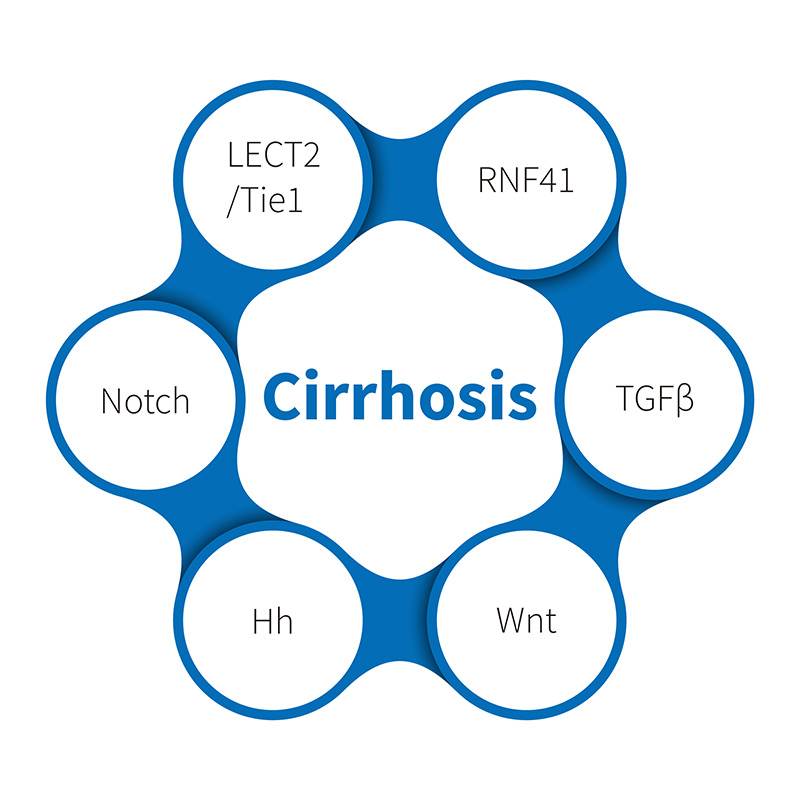Cirrhosis is a severe scarring condition of the liver that disrupts its normal function. It represents the end stage of chronic liver damage caused by various factors, including hepatitis, chronic alcoholism, and autoimmune diseases. When the liver sustains repeated injuries, it attempts to repair itself, leading to the formation of scar tissue. Over time, the accumulation of scar tissue impairs liver function, progressing to advanced cirrhosis, which can be life-threatening.
People with early-stage cirrhosis often remain asymptomatic, and the condition is typically detected during routine blood tests or imaging studies. Diagnosing cirrhosis requires a combination of laboratory and imaging tests, and advanced cases may necessitate a liver biopsy for confirmation.
In understanding cirrhosis, particularly autoimmune cirrhosis, the use of animal models—especially small animals—has proven invaluable. These models allow researchers to investigate the complex pathophysiological mechanisms of the disease, explore treatment strategies, and identify potential biomarkers.
Why Use Small Animals to Investigate Autoimmune Cirrhosis?
Advantages of Small Animal Models
Reproducibility and Control: Small animals provide a controlled environment in which researchers can manipulate variables to study specific aspects of autoimmune cirrhosis.
Genetic Similarity: Many small animals share a high degree of genetic similarity with humans, making their responses to autoimmune stimuli highly relevant to human disease.
Cost-Effectiveness: Small animals, particularly mice and rats, are more cost-effective for large-scale studies compared to non-human primates or other larger models.
Ethical Considerations: Using small animals adheres to ethical guidelines while minimizing the impact on higher-order species.
Commonly Used Small Animal Models
Genetically Modified Mice: These models are engineered to exhibit specific genetic traits associated with autoimmune diseases, helping researchers investigate their role in cirrhosis development.
Induced Models: In some cases, autoimmune responses are chemically or biologically induced in small animals to mimic human autoimmune cirrhosis.
Spontaneous Models: Certain strains of mice naturally develop autoimmune diseases, making them ideal for studying the natural progression of the disease and immune responses.
Research Insights from Small Animal Models
Small animal models have advanced our understanding of autoimmune cirrhosis in several key areas:
1.Immune Dysregulation
Autoimmune cirrhosis involves a breakdown in immune tolerance, leading to chronic inflammation. Small animal studies have identified specific T-cell and B-cell mechanisms responsible for this dysregulation.
Research using genetically modified mice has uncovered critical roles for cytokines like TNF-α and IL-17 in driving inflammation.
2.Biomarker Identification
Small animals have facilitated the identification of biomarkers for early diagnosis and disease monitoring. Elevated levels of liver enzymes (e.g., ALT and AST) and specific autoantibodies are commonly found in these studies.
3.Drug Development
Preclinical trials using small animals have tested various immunosuppressive drugs and biologics, such as monoclonal antibodies targeting specific immune pathways.
Innovative treatments, such as gene therapy, are also being explored using these models, offering hope for personalized medicine in autoimmune cirrhosis.
4.Gut-Liver Axis
Emerging research highlights the role of the gut-liver axis in autoimmune diseases. Studies in small animals have demonstrated how dysbiosis (gut microbiome imbalance) contributes to immune activation and liver damage.

The Contribution of HKeybio to Autoimmune Disease Research
HKeybio, a leading Contract Research Organization (CRO), specializes in preclinical research related to autoimmune diseases. With state-of-the-art facilities, including a small animal and detection test facility in Suzhou Industrial Park and a non-human primate test base in Guangxi, the company is at the forefront of autoimmune cirrhosis research.
Expertise and Capabilities
Experienced Team: The team boasts nearly 20 years of experience in international pharmaceutical research, ensuring the use of reliable and cutting-edge methodologies.
Comprehensive Models: HKeybio utilizes both small animal and non-human primate models to investigate autoimmune diseases, offering a unique comparative perspective.
Innovative Testing: Advanced imaging and molecular biology techniques employed by HKeybio enhance the accuracy and reliability of preclinical studies.
By leveraging small animal models, HKeybio contributes to a deeper understanding of autoimmune cirrhosis, paving the way for innovative treatments.
FAQs
How is autoimmune cirrhosis diagnosed?
Early-stage cirrhosis often has no symptoms and is usually detected through blood tests and imaging studies. Advanced cases may require a liver biopsy.
Why are small animals used in autoimmune cirrhosis research?
Small animals, such as mice and rats, offer a cost-effective, genetically similar, and ethically feasible model for studying the disease's mechanisms and testing treatments.
What is HKeybio’s role in autoimmune disease research?
HKeybio specializes in preclinical research on autoimmune diseases, utilizing small animal models to investigate disease progression and therapeutic interventions.
What are the latest trends in autoimmune cirrhosis research?
Emerging trends include exploring the gut-liver axis, identifying biomarkers for early diagnosis, and testing personalized medicine approaches, such as gene therapy.
Conclusion
The study of autoimmune cirrhosis has benefited immensely from the use of small animal models. These models provide crucial insights into the disease's pathophysiology, enable biomarker discovery, and facilitate the development of innovative treatments. With organizations like HKeybio leading the charge, the future of autoimmune cirrhosis research looks promising, offering hope for improved diagnostic and therapeutic strategies.
By integrating preclinical studies with the latest trends in autoimmune research, scientists and CROs can work together to unravel the complexities of cirrhosis, ultimately improving patient outcomes and advancing medical science














